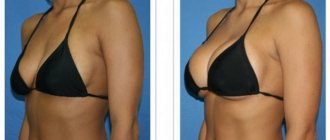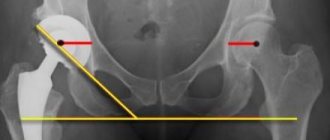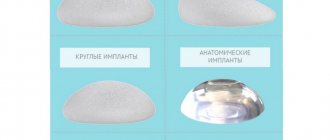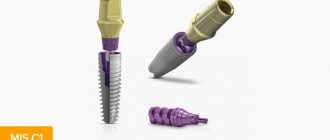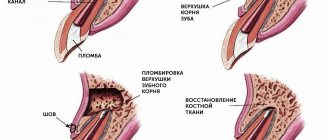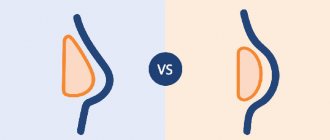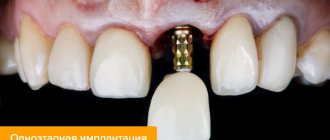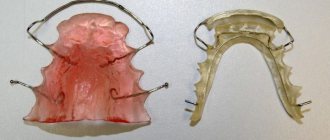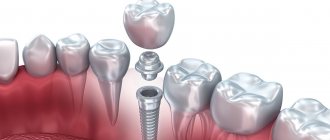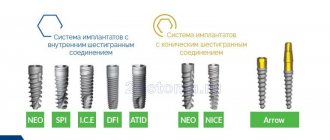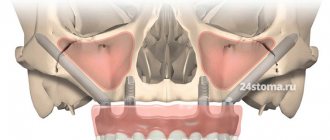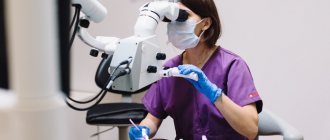Breast augmentation is the most popular plastic surgery in Moscow. Dr. Philippe Mistakopoulou helps patients choose the desired breast size, taking into account body proportions, maintaining balance and harmony. After breast augmentation, the breasts acquire a natural teardrop shape. The operation helps not only to enlarge the breasts, but also to lift them, as well as eliminate asymmetry, if any.
Breast augmentation through areola
Installation of anatomical implants with a volume of 350cc under the pectoralis major muscle, without incisions in the breast tissue. Cosmetic seam along the edge of the areola.
Open photo gallery
Breast augmentation through the areola is one of the most gentle and atraumatic methods of mammoplasty. Philip Nikolaevich installs a breast implant through the periareolar approach, making a 3.5-4 cm incision along the lower edge of the areola. The structure of the areola is close to mucous tissue, which is restored faster than the skin. Thanks to this, the scar along the edge becomes invisible within 1-1.5 months after the operation, and no scars remain on the chest. Advantages of the operation:
- Breast augmentation through the areola takes only about an hour;
- no scars remain on the skin of the breast;
- the sensitivity of the nipple and areola does not change;
- the ability to breastfeed is preserved, since the breast tissue is not affected during the operation;
- After the operation, the patient can quickly return to her usual lifestyle.
Plastic surgery through the areola is low-traumatic, and the body recovers quickly.
Who is indicated for mammoplasty through the areola?
The main indications for which mammoplasty through the nipple may be recommended:
- dissatisfaction with small breast volume;
- the desire to restore the volume and elasticity of the mammary glands after pregnancy or weight loss;
- asymmetry of the shape and size of the mammary glands;
- tubular mammary glands;
- large areola diameter;
- slight sagging of the breasts (ptosis of the 1st-2nd degree);
- desire to replace previously installed implants with new ones.
Mammoplasty through the areola is suitable for young nulliparous girls who plan to breastfeed their child in the future, and for women after childbirth who want to regain their beautiful shape and do not exclude further lactation. Breast augmentation through the nipple does not affect the glandular tissue at all and does not interfere with feeding functions.
What you need to know about breast surgery
Breast augmentation with implants or mammoplasty is an operation to implant an artificial element - an endoprosthesis or an implant - into the area of the mammary glands. This method not only increases volume and size, but also corrects the shape, gives elasticity and visual appeal, eliminates sagging and other defects.
However, the implantation of breast implants is carried out not only for aesthetic purposes, but also for medical reasons, for example, if the breast is not formed correctly or when it needs to be restored after amputation.
It should be borne in mind that implantation is a serious surgical operation that has a number of contraindications and can cause serious health consequences. Therefore, the key to successful plastic surgery is the right clinic and high-quality, well-chosen implants.
Modern implants so skillfully imitate the natural shape and structure that they are indistinguishable from real breasts even to the touch. Only a specialist can determine the surgeon’s intervention.
And although mammoplasty is now used everywhere, is painless and without a long rehabilitation period, it is used for certain indications:
- small breast size (micromastia);
- pronounced asymmetry of the mammary glands;
- replacement of an already installed endoprosthesis;
- loss of volume as a result of weight loss;
- sagging mammary glands after pregnancy and lactation;
- recovery after amputation;
- age-related ptosis.
*Photos before and after installation of implants for micromastia
Preparing for surgery
Before the operation, you need to have a face-to-face consultation with the surgeon. He will assess the condition of the breast and individual health characteristics, and select the ideal implants and surgical technique. For example, if you have a small areola, placing a large implant through the periareolar approach will be difficult. In this case, Philip Nikolaevich can offer endoscopic augmentation through the armpit. If the sagging of the glands is severe (ptosis from the 3rd degree), the doctor will recommend a lift (mastopexy).
The doctor will also tell you about contraindications and possible risks after the operation, how it will proceed, and how quickly you can return to your normal lifestyle.
Implant structure
Silicone endoprostheses consist of a shell and a filler.
Filler
Typically, the implant is filled with high-viscosity silicone gel. It has good elasticity and holds its shape well. However, if it ruptures and leaks, it is dangerous, and gradually, when wearing an endoprosthesis, flows into its lower part, which reduces the aesthetic effect. The filler is not always silicone of varying degrees of cohesiveness (viscosity). There are implants filled with saline solution, with different projections and sizes.
Cohesive gel is also used. It is soft and provides a natural effect: the silicone implant looks like a real breast and at the same time has a “memory” effect, that is, it returns to its original shape when subjected to deformation.
Shell
Most products today have a textured shell that allows natural ingrowth of the surrounding soft tissue. This ensures good fixation of the endoprosthesis in place and reduces the likelihood of capsular contracture.
How are implants selected?
The choice of implants depends on the wishes and individual characteristics. The most obvious methods of selection are the use of the so-called “sizer” and 3D modeling. A sizer is an overlay implant that allows you to estimate the future volume of the breast. The surgeon has various sizes of sizers at his disposal. By placing them in a special bra, a woman can choose the size she likes. 3D modeling helps you choose the shape of the implant. During the consultation, the surgeon takes photographs and then models the breasts with different types of implants on a computer. This way you can see your future breasts before surgery.
Also during the consultation, the chest dimensions are measured. The width, height and projection of the implant must correspond to them. The doctor takes into account the thickness of the pectoralis major muscle and gland, the presence of ptosis and shape asymmetry, evaluates the symmetry of the areolar complex and other indicators. As a result, an implant of a certain size, width, height and projection is selected. For a more natural result, Philip Nikolaevich recommends choosing teardrop-shaped implants, because they perfectly follow the shape of a natural female breast.
The advantage of teardrop-shaped implants is that the breasts look as natural as possible in both vertical and horizontal positions. The breast takes the shape of a drop, and the upper, less filled edge of the implant does not protrude into the upper part of the gland, even if the implant is large. Therefore, teardrop-shaped implants are especially suitable for women with small breasts.
According to Dr. Mistakopoulou, it is best to avoid unnaturally shaped breasts. But if you want to have fuller, rounder breasts, your doctor may recommend installing round implants. If the patient has enough of her own glandular tissue, a round implant can be placed under the mammary gland.
Installation of an implant under the gland
When the implant is placed under the gland, it is placed in the space between the gland and the pectoralis major muscle.
In this case, the implant is covered only by skin, subcutaneous tissue and gland tissue. In this case, the muscle is not touched. The implant is installed under the gland, and only the gland tissue and subcutaneous fat cover it on top.
What are the advantages of this method? The next day, the patient calmly goes home, there is practically no pain, and the use of painkillers is not even required. Heals quite quickly, well.
What are the disadvantages? For thin patients, this method is unacceptable; the thickness of the soft tissue is very small and the implant can be felt in some places. If the patient is ready to take such a risk, then an implant can be placed under the gland; if she is not ready, then another method must be used.
Examination before surgery
Before the operation, the patient should not have colds or other diseases. It is necessary to undergo examination:
- do an ultrasound of the mammary glands and blood vessels of the lower extremities;
- take blood and urine tests;
- undergo an ECG;
- consult an anesthesiologist.
- Print list of examinations
You should take a bath the night before. A light dinner is allowed. The operation is carried out strictly on an empty stomach; eating and drinking on the day of mammoplasty is PROHIBITED!
How does enlargement occur through the areola?
Mammoplasty through the areola is performed under general anesthesia and lasts about an hour. First of all, the surgeon makes a 3.5-4 cm incision to install the implant, along the pigmented edge of the areola, which differs from the skin in structure. Thanks to this, the scar is completely invisible in the postoperative period. Then Philip Nikolaevich creates a subcutaneous tunnel under the base of the mammary gland or under the pectoralis major muscle, without affecting the breast tissue. In this place there will be a so-called “pocket” for placing the implant. The implant is inserted into the pocket. After surgery, dissolvable sutures are placed in the skin and the patient is placed in a compression bra.
Types of accesses in mammoplasty when installing breast implants
Endoprosthesis replacement is performed in three access options. After consultation and examination, the plastic surgeon decides which way is best to insert endoprostheses.
Submammary (submammary) access
This is the first and well-developed type of plastic surgery, which is now operated using new techniques and technologies. The incision is made along the natural fold located under the breast. A pocket is formed under the breast or muscle into which the implant is placed. The endoprosthesis looks more natural under the muscle.
The advantages of the inframammary approach include:
- correction techniques brought to perfection;
- easy recovery period;
- possibility of prosthetic implants of large volumes;
- universality of the method;
- maintaining the integrity of the mammary gland.
This method also has disadvantages. Due to the need to transfer the own submammary fold, there is a possibility of implant prolapse.
Plastic surgeons recommend this method to all women who have a pronounced submammary fold under the breast. It is not done for girls with small and high breasts, which after plastic surgery will not hide the postoperative scar.
Periareolar access
This is a method of installing an implant through the areola. To do this, at the border with the skin, along the lower edge of the areola, a small incision is made into which the implant is inserted. It can be installed behind a muscle or gland.
From an aesthetic point of view, this is the most acceptable method.
With mammoplasty with periareolar access, you can not only increase the size, but also correct other breast defects:
- reduce the size of the areola,
- restore the symmetry of the mammary glands;
- pull up the nipples;
- perform a mini gland lift;
- move the nipples to the periphery or closer to the center.
This access also has disadvantages, and quite significant ones:
- the possibility of the formation of a keloid scar cannot be excluded;
- discomfort during the rehabilitation period when installing an implant under the muscle;
- possible loss of sensation in the nipple;
- there is a possibility of the formation of pericapsular contracture - excessive formation of fibrous tissue around the endoprosthesis and deformation of the mammary glands;
- there is a possibility of retraction of the scar under the areola.
Surgeons do not recommend this method for women planning to breastfeed for a year after plastic surgery. It is not suitable for patients with light-colored nipple areolas, as well as those who have a tendency to form a keloid scar.
Transaxillary access
This is an endoscopic method of installing an implant through the armpits. An incision is made along the posterior edge of the pectoralis major muscle, in the armpit area. It can be vertical or horizontal. Under the control of endoscopes, surgeons form a cavity, place an endoprosthesis, quickly eliminate bleeding, and control all risks. At the same time, the doctor, using a video camera, sees the correct installation of the implant.
In some clinics, this operation is performed “blindly”, but this method is too traumatic and there is a high risk of bleeding under the muscle. Now it is practically not used. Optics reduced the risk of hematomas, massive bleeding and other complications.
The endoprosthesis is inserted without injuring the mammary gland, since its tissue is not affected during surgery. This is important for women who want to breastfeed their baby. This access is one of the most aesthetic methods, in which it is easiest to hide traces of surgical intervention.
This method has other advantages:
- recovery time after surgery does not exceed two weeks;
- the scar completely resolves within five months and does not form a keloid;
- these methods provide the possibility of fixing the implant and reduce the risk of displacement after correction;
- The duration of the surgical intervention does not exceed 40 minutes.
The disadvantages of the method include the impossibility of plastic breast correction during surgery. This type of access is not used when it is necessary to eliminate the asymmetry of the glands and shift the inframammary fold. The method does not exclude the possibility of the formation of fibrous contractures, in which excessively overgrown fibrous tissue deforms the endoprosthesis and the breast.
After correction with axillary access, scars do not require special care. Physical activity is not excluded, you can raise your arms.
According to plastic surgeons, this method of access gives excellent results on a “boyish figure” with small breasts.
Postoperative period
You will be discharged from the hospital on the 2nd day after the operation. After 3-4 days, depending on how you feel, you will be able to return to work. In the first week you need to come to the surgeon for examination 1-2 times, then 1 time every 2 weeks during the first month, and finally 1 time in the next 3-4 weeks. You will need to wear a special compression cuff for 2-3 weeks after surgery. For the first 10 days, it is advisable to sleep on your back.
You can take a shower no earlier than 6-7 days after plastic surgery - just before that, your external sutures will be removed. The scars will appear pinkish for the first 3-4 months and then disappear. The aesthetic result appears 3-4 weeks after surgery. The final result depends not only on the skill of the surgeon, but also on the health of the patient and how carefully she follows the doctor’s instructions.
Does it hurt during implantation?
All procedures are carried out under local anesthesia, so the patient does not experience any painful sensations - he only feels the mechanical work of the doctor in the mouth, as during conventional dental treatment. In fact, the manipulations performed when installing an artificial root are less invasive and traumatic than when removing a tooth.
If you are very worried and are terrified of the upcoming operation, the clinic may offer implantation under sedation - in a relaxed state, but in full consciousness. The patient is given drugs that put him into a light sleep and he ceases to experience anxiety.
Cost of breast augmentation through areola
The price of breast augmentation starts from 300,000 rubles if you choose round implants, and from 320,000 rubles if you choose teardrop-shaped implants (Motiva Ergonomix). The total price includes:
- consultation with an anesthesiologist;
- anesthesia;
- operating consumables;
- implants;
- a day of hospital stay (room and meals);
- postoperative observation, dressings, suture removal;
- supervision of the surgeon during the entire rehabilitation period.
The cost of the operation is calculated individually. It depends on the type and shape of the selected implants, the surgical technique and other nuances that the doctor will tell you about at the preliminary consultation.
